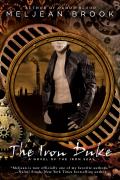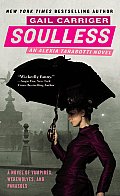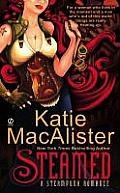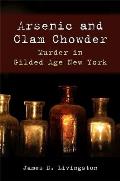Hotel Angeline: A Novel in 36 VoicesThe product of
The Novel: Live!
I think that it's pretty safe to say that there's never been a novel like
Hotel Angeline before. It was written by 36 authors (each writing for two hours) over the course of six days in October 2010.
The Novel: Live! made novel-writing a performance art.
The plot, which was outlined before
The Novel: Live! event is centered around 14-year-old Alexis Austin and the eccentric-full mortuary-turned-residential hotel run by her mother.
My favorite line was written by Jarret Middleton. He has Alexis say,
"Nothing's that simple anymore. I just got tossed into this world that I don't agree with, where everything drastically changes in an instant. [...] It feels like thirty-six authors are somewhere writing my life" (126)
That kind of self-reflexivity seems absolutely perfect for a novel written like
Hotel Angeline. While some transitions between chapters were seamless, others were jarring. It was difficult for me to relate to Alexis because she was portrayed inconsistently enough that she seemed to have some sort of personality disorder (though most of the other characters survived their multiple authorship fairly well
1).
Hotel Angeline was well-plotted even though much of what happens in the course of the novel is a bit far-fetched. I didn't find it particularly compelling though. Despite the fact that the novel is short (258 pages), I didn't read it quickly. There were moments when I wanted more, but inevitably the close of the chapter came and that desire ended with it.
In the end I have to say that while I really wanted to like
Hotel Angeline I appreciated idea behind the novel and its production, more than I enjoyed the novel itself. That's not to say that
Hotel Angeline isn't worth a read particularly since proceeds from the sale of the novel will be donated to literacy programs making it a feel-good purchase.
Given constraints of its production,
Hotel Angeline is a great achievement and I do believe that the individuals who planned
The Novel: Live! achieved their goal, which was, as articulated by Garth Stein, "to build a solid, fun story that was a collaboration between three dozen writers, various editors, and an audience both live and virtual [...,] to create [...] a community" (11).
The thirty-six authors who wrote
Hotel Angeline--Kathleen Alcalá, Matthew Amster-Burton, Kit Bakke, Erica Bauermeister, Sean Beaudoin, Dave Boling, Deb Caletti, Carol Cassella, Maria Dahvana Headley, William Dietrich, Robert Dugoni, Kevin Emerson, Karen Finneyfrock, Jamie Ford, Clyde W. Ford, Elizabeth George, Mary Guterson, Teri Hein, Stephanie Kallos, Erik Larson, Stacey Levine, Frances McCue, Jarret Middleton, Peter Mountford, Kevin O'Brien, Julia Quinn, Nancy Rawles, Suzanne Selfors, Jennie Shortridge, Ed Skoog, Garth Stein, Greg Stump and David Lasky, Indu Sundaresan, Craig Welch, and Susan Wiggs--are all Seattle-based. While I've read a few of the authors and know of some of the others, I was surprised at my overall lack of name recognition. But, part of what's so wonderful about
Hotel Angeline is how it offers readers a taste of so many different writers. I particularly liked Stephanie Kallos' chapter (31) so I'm planning to check out one of her novels.
I did have a technical difficulty when reading
Hotel Angeline.
2 Chapter 11, which is presented in a graphic-novel format (Greg Stump and David Lasky), wouldn't display on my Nook so I had to visit my computer to read that portion of the novel.
disclosure: I received a review copy of Hotel Angeline from Open Road Media via NetGalley.
- Alexis' girlfriend Linda was the only other one who was noticeably uneven.
- While I did read a pre-publication copy, the novel is only being released as an e-book so I assume that the problem may still exist




 Examining the choices made by a line of women,
Examining the choices made by a line of women, 





 I've been watching the
I've been watching the 



 Jack Fletcher is a computer engineer and steampunk enthusiast. When his sister1 accidentally causes an explosion in Jack's lab, both are knocked unconscious. They wake in the hold of an airship in an alternative world that is the stuff of Jack's fantasies. He quickly becomes smitten with the ship's captain, the red-headed Octavia, who believes that the stowaways are spies.
Jack Fletcher is a computer engineer and steampunk enthusiast. When his sister1 accidentally causes an explosion in Jack's lab, both are knocked unconscious. They wake in the hold of an airship in an alternative world that is the stuff of Jack's fantasies. He quickly becomes smitten with the ship's captain, the red-headed Octavia, who believes that the stowaways are spies.



 I think that it's pretty safe to say that there's never been a novel like
I think that it's pretty safe to say that there's never been a novel like